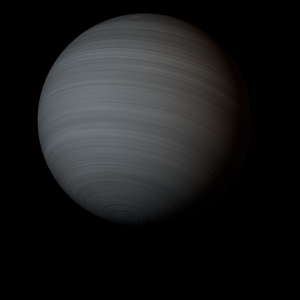|
|
Space Astro
|
Info for exoplanet "Theepapsa Ke"
| Scientific (actual) data |
|---|
| Name | WASP-16 b |
| Planet status | Confirmed |
| Planet mass | 0.855 |
| Radius | 1.008 |
| Orbital period | 3.1186 |
| Semi major axis | 0.0421 |
| Orbit eccentricity | 0 |
| Inclination | 85.22 |
| Discovered | 2009 |
| Updated | 2013-06-18 |
| Tzero tr | 2454580 |
| Publication | Published in a refereed paper |
| Detection type | Primary Transit |
| Star name | WASP-16 |
| Right ascension | 214.68° |
| Declination | -20.28° |
| Mag v | 11.3 |
| Star metallicity | 0.01 |
| Star mass | 1.022 |
| Star radius | 0.946 |
| Star sp type | G3V |
| Star age | 2.3 |
| Star temperature | 5550 |
| Wikipedia article | WASP-16 b |
Back
| |
| Fictional info (?) |
|---|
| Suggested name | Theepapsa Ke |
| Planet type | Hot gas giant |
| The volume of water ice in the south polar ice cap, if melted, would be sufficient to cover the entire planetary surface to a depth of 18 meters. The volume of water detected has been estimated to be equivalent to the volume of water in the Black Sea. |
| Atmosphere | Hydrogen | 53% |
| Xenon | 25% |
| Helium | 19% |
| Hydrogen chloride | 2.1% |
| Nitric oxide | 0.47% |
| Atmospheric pressure | 0.17 bar |
 |
| No known satellites |
| Google search for Theepapsa ke |
|
Website by Joachim Michaelis
|
|
|
|